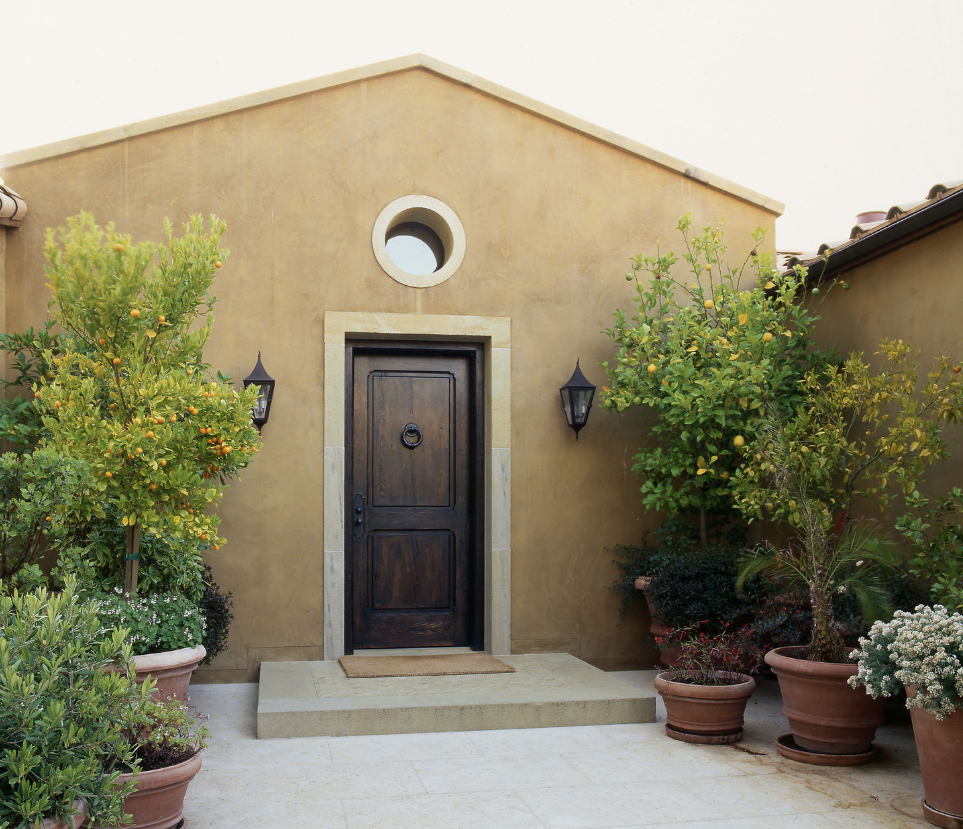FROM VISION TO REALITY: STONE SELECTION
We often wonder how the Egyptian pharaohs dealt with their designers when questions arose as to color or texture of temples. We suppose the threat (or promise) of being entombed for eternity in one’s own design had a way of focusing the conversation. Every artist, architect or designer from the first cave painters and designers of pyramids and cathedrals all the way to the people I work with today have struggled with the issues of color and texture. How difficult it can be to marry vision with physical reality. Every day we work with clients and suppliers from all over the world, and much of our discussion invariably centers on the colors and textures of stone and other mason’s materials we work in.
When the pharaohs ordered the pyramids built, the master masons knew that only those materials that could be quarried and barged down the Nile would be used. The colors of the stone were known to all involved and texture was determined by what the stone cutters and carvers could achieve with the tools at hand.
So much has changed. Today we can order blocks of stone from China, have them shipped to Italy or Java to be carved, and delivered to your doorstep. This opens the door to a world of possibilities and all of the attendant problems of sorting through the choices.
So many concerns determine how we select and use stone and masonry.
The color and the grain.
The texture of the finish.
How does it feel?
What will it cost?
The issues for the quarry and the stone shop are equally complex.
In stone deposits color striations can vary as the stone is mined from one place to the next, sometimes in as little as a few feet!
Stone deposits have a finite quantity; essentially we can exhaust the supply.
Colors can change as “the sap” runs out of newly quarried blocks of stone.
Every type of finish or polish given to a stone will change its texture or color.
Finally, for us the master masons charged with delivering our clients’ dreams, the issues grow more complex.
Color is a subjective judgment. What one person sees as green can be aqua to another.
The natural light in Hawaii can differ substantially from the natural light in San Francisco.
Samples provided by architects and clients can be out of date and bear little relation to what is currently being quarried.
Many stones have a limited application. Some that are suitable for countertops can not be used to build walls
So, given all of these myriad problems, how can our clients be assured that their visions will become reality?
The team at QuarryHouse has been working hard on developing a process that helps everyone, from the quarry to the client, understand what is expected.
The Master Sample Program is our answer. The goal of this program is to assure our clients that they receive exactly what is promised. There are two components to this program:
Design Samples are similar to the cloth swatches you would collect when choosing fabrics. Helpful in determining color and combinations that form pallets, they are the first step in the decision process. These samples can come in many shapes and sizes. They could be a precisely sized tile or a piece of fieldstone. They could be provided by:
The designers library
The QuarryHouse library
The quarry itself
A distributor or broker
If you are working with QuarryHouse under Pre-Construction Services, we often will couple these samples with images of the stone from recent installations or historical context. When the team is comfortable that they have developed a pallet of colors, textures and finishes that is correct for the project, we move on to the next step.
The Master Samples confirm the choices, inform everyone on the team, and act as the control for the entire process, from ordering to installing. QuarryHouse orders sets of samples that:
Are sized as recommended by the producer to truly represent the material.
Are in the quantity required to show all the finishes and colors that will be present in the final order.
Are sorted into sets that match exactly. A set is provided for each team member, including the architect/designer, the quarry/fabricator, the jobsite supervisor, QuarryHouse, and other team members as required.
Each set is dated, labeled with job name/stone name/finish, and signed by the client and the architect.
As the job progresses, materials received can be checked against the Master Samples to assure that there are no deviations. If production problems are encountered, the Master Samples can be an important tool in discovering what went wrong and how it can be corrected.
Guidelines to be remembered:
Allow for enough time in your project planning to truly study the materials.
Get your stone professional involved early.
Be careful of the “paint chip” mentality. Ask to see installations, photos, and more design samples.
Always consider how the composition will look in scale.
Make a mock-up part of your planning process, to confirm color, texture, scale, details and workmanship.
Always insist that a Master Sample Set is created, dated, labeled and signed before any materials are ordered.
Thank you for taking the time to understand some of the key processes and distinctions of stonework. Paying careful attention to all the details is how QuarryHouse creates The Art Of Legacy.

